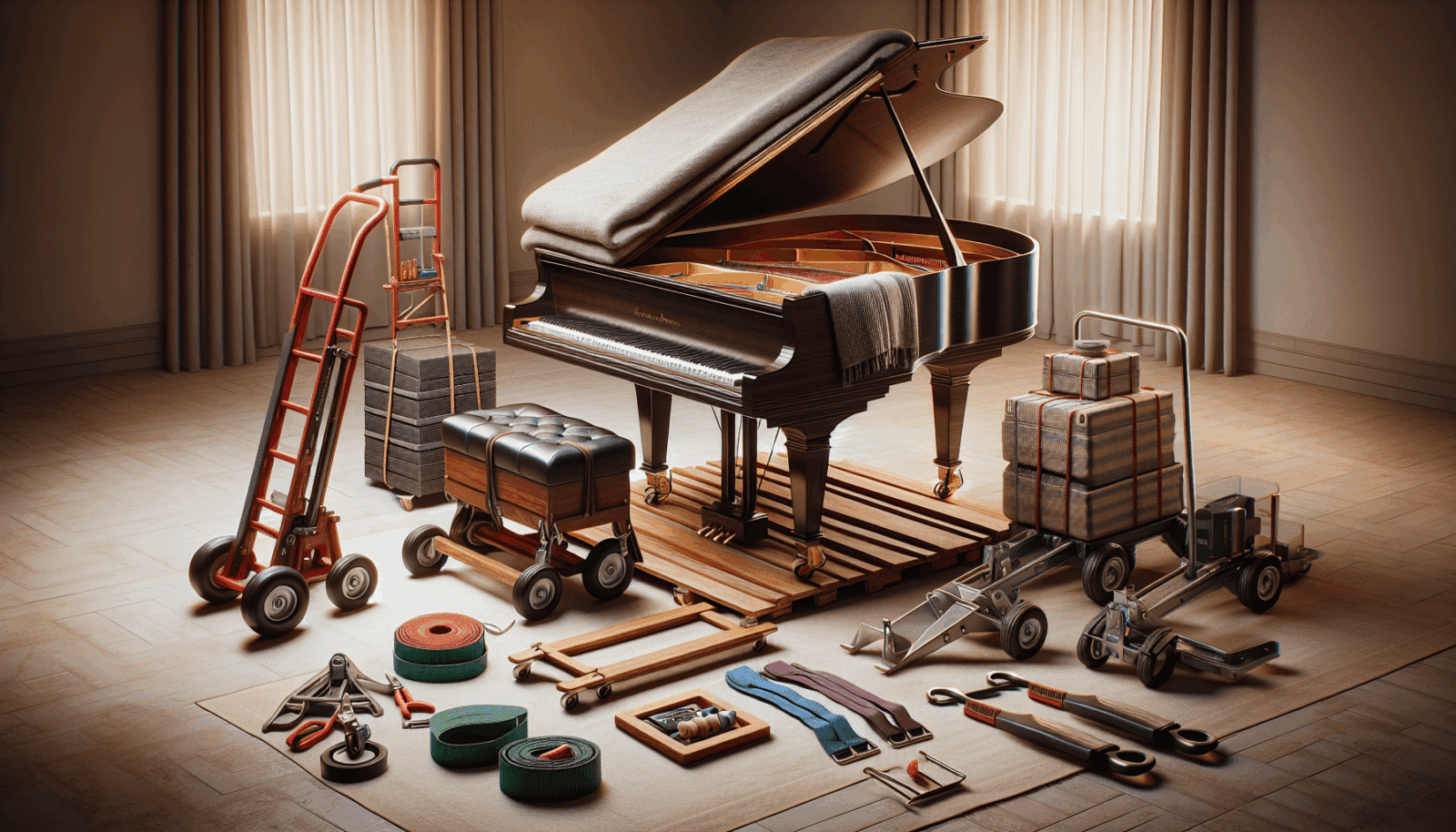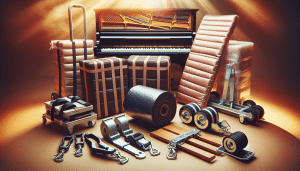Expertly moving a Grand Piano is no small feat, but Utah Piano Movers is here to ensure your prized instrument reaches its new home unscathed. We understand the challenges homeowners face in maneuvering these majestic pieces safely, and we are excited to share our knowledge to help you. This guide is your ultimate resource for tackling the complexities of piano moving, offering a clear path to a stress-free move. Armed with expert advice and insider tips, you’ll be well-prepared for transporting your piano without a hitch.
Contents
- 1 Understanding the Complexities of Moving a Grand Piano
- 2 Tools and Equipment You’ll Need
- 3 Preparing the Piano for Moving Day
- 4 Mapping Out the Moving Route
- 5 Proper Lifting Techniques
- 6 Securing the Piano in the Moving Vehicle
- 7 5 Essential Tips for Moving the Piano Safely
- 8 Handling Obstacles and Unforeseen Challenges
- 9 After the Move: Getting Your Piano Tuned
- 10 Conclusion
Understanding the Complexities of Moving a Grand Piano
Moving a grand piano is not as simple as moving an ordinary piece of furniture. The sheer size and weight make it a formidable task, one that requires careful planning and precise execution. Additionally, grand pianos are intricate instruments composed of thousands of delicate parts that can be easily damaged.
Consider some of the value beyond just the monetary aspect; they hold sentimental significance for many, having provided endless hours of musical enjoyment. Therefore, understanding the logistics involved in moving such an item is crucial for ensuring both its safety and its continued ability to enchant audiences in future settings.
Tools and Equipment You’ll Need
Our experience highlights that having the right tools is half the battle won when moving a grand piano. With the proper equipment, you can avoid pitfalls and ensure a smoother process.
Invest in a quality piano dolly specifically designed for grand pianos. This investment can greatly reduce physical strain and risks of damage. Additionally, having sturdy straps and padding is essential to secure and protect the piano during transport. Don’t forget, ramps are indispensable components for navigating stairs or elevated surfaces with ease.
Preparing the Piano for Moving Day
Before the big day, take time to prepare your grand piano thoroughly. This preparation is foundational to a successful moving experience.
Begin by removing the music stand and any other detachable parts to prevent damage during transit. Safeguard these components by wrapping them in protective material and labeling them appropriately. Then, secure the keyboard lid to avoid unwanted openings while in motion. A small step such as this can prevent accidental damage to the keys.
Mapping Out the Moving Route
Defining a clear moving route is essential for avoiding unexpected obstacles on the actual moving day. Measure every doorway, staircase, and hallway that the piano will traverse. This ensures that you have adequate space at every turn.
Consider factors like tight corners, low ceilings, and even changes in flooring surface that may require additional attention or equipment. Planning these details will help prevent situations that could lead to damage or delays.
Proper Lifting Techniques
Maintaining safety for both the movers and the piano hinges on using the correct lifting techniques. Follow these basic guidelines to ensure everyone and everything stays in one piece.
Always enlist the help of multiple people when lifting, distributing the weight evenly to prevent strain. Then, lift with your legs instead of your back, as this engages larger and more powerful muscle groups, minimizing the risk of injury. Most importantly, maintain clear communication among your team to ensure movements are coordinated and precise.
Securing the Piano in the Moving Vehicle
Once the grand piano is safely loaded onto a moving vehicle, it’s crucial to secure it in place to avoid shifts during transit. This is where the real test of planning and preparation comes in.
Use sturdy straps to anchor the piano firmly to the vehicle interior, paying special attention to the instrument’s center of gravity. By immobilizing the piano, you prevent harmful jolts or tipping as the vehicle navigates curves or sudden stops. Additionally, use heavy padding to cushion the piano on all sides, protecting its polished exterior.
5 Essential Tips for Moving the Piano Safely
- Plan Ahead: Start your planning process weeks in advance, considering all logistics to avoid last-minute surprises.
- Hire Professionals: If the endeavor feels too daunting, consider hiring professional movers to manage it for you.
- Communicate Clearly: Ensure everyone involved is on the same page, using clear signals and coordinating steps.
- Inspect for Damage: Before and after the move, inspect the piano for any signs of damage to identify problems early.
- Acclimate After Arrival: Allow the piano to adjust to its new environment before tuning or playing.
Handling Obstacles and Unforeseen Challenges
Even with perfect planning, surprises may emerge—such as narrow doorways or unexpected inclement weather. In such scenarios, flexibility and patience are key to adapting without stress.
Consider alternate pathways or disassembly of piano elements, if possible, to gain the necessary clearance. Moisture protection for the piano may also become a priority during rain or snow, requiring quick coverage solutions to protect finishes and internal components.
After the Move: Getting Your Piano Tuned
Once your grand piano safely reaches its new setting, it will likely require some adjustment. Transport can affect its tuning due to shifts in internal mechanisms.
Allow your piano to acclimate to the new environment’s temperature and humidity. After a few weeks, professional tuning will restore its harmonious sound, ensuring it performs at its best for your musical enjoyment.
Conclusion
When you need expert help, turn to Utah Piano Movers. Call us at 801-396-7323 or Request a Free Quote today to make your next move seamless and efficient.




